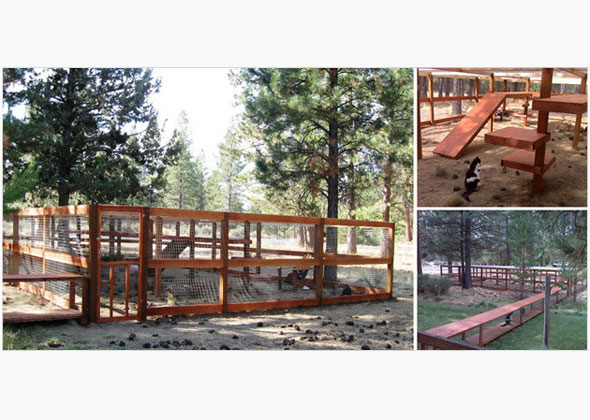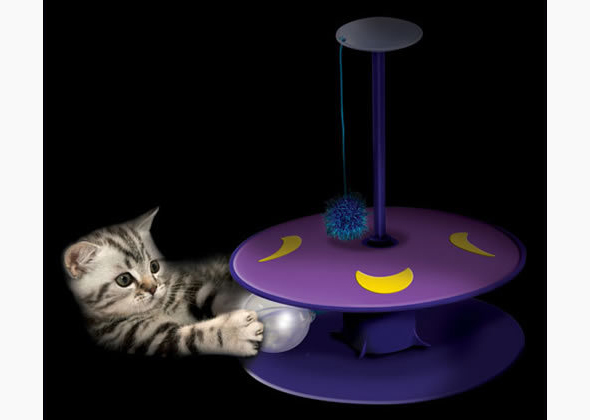Senior Cats: What to Expect at 13-15 Years
Published on May 03, 2012
Your cat may be a senior citizen now, but these days, cats live longer and healthier lives, thanks to great pet owners like you, good nutrition and quality veterinary care. Some cats even live into their 20s! But still, this is a time when it is critical to keep a close eye on your favorite feline and watch for behavior changes that may signify health complications. Then, if anything develops, be quick to consult your veterinarian.
All featured products are chosen at the discretion of the author. However, Vetstreet may make a small affiliate commission if you click through and make a purchase.
Physical and Mental Development
No doubt, you’ve noticed your cat is slowing down. That process will only continue and become more noticeable as he ages. Older cats frequently develop arthritis in their joints, making it harder to jump up on the back of the couch, climb the cat condo or get into and out of the litterbox. Vision and hearing loss are also common. You’ve probably already noticed an increase in catnaps, another indication that your cat is getting a little older.
Like most senior animals, aging cats can develop dementia, and from this point on, your cat is at increased risk. It is harder for him to learn new things and adjust to change now, and he may get confused more easily. Always report these physical and mental changes to your veterinarian since they may be the first signs of disease.
While elderly cats may tend to have more problems, many of these complications of old age can be successfully managed. For example, cats suffering with joint pain have more pain management options than in the past. You may want to consider a joint health supplement for cats such as Nutramax Cosequin Sprinkle Capsules for Cats.
Behavior Changes
Aging involves some inevitable slowdowns. Not only will your cat sleep more and become less active, he may become irritable, cranky and more easily disturbed. Playful children just may tick him off! So watch those young kids around your elderly cat and remind them to approach quietly. Even if he has been an angel his entire life and never scratched a soul, his temper will be shorter.
If you have other animals in the household, you may notice them all undergoing behavioral changes. This is because animals develop a natural pecking order, and as your cat ages, his place in that order may change. The other animals can begin to pick on him. If this becomes a problem, you may need to separate them.
Cats are often loners, but you may notice your cat keeps to himself more often now. Also, many older cats begin to vocalize more, and they become increasingly anxious about the unknown, whether it is people or noises. At this stage, you won’t be able to train this problem out of him. Instead, try to make him as comfortable and relaxed as possible by minimizing change in his world. If anxiety problems persist or get out of hand, your veterinarian can prescribe medication to help.
Health and Nutrition
Your cat will need to see the veterinarian at least twice a year now for a checkup. Your veterinarian will want to do a complete geriatric workup, which will include a complete physical exam and evaluation of blood, urine and stool samples. In addition to looking for signs of serious disease, this will help to determine the dietary requirements for your cat.
Many cats at this age have developed diabetes, kidney or liver disease, or urinary tract problems. All of these conditions can require medical treatment and diet modifications. You can also do an at-home test of your cat’s poop to check for inflammation in her gut.
Your veterinarian will also take time to examine the quality and sheen of your cat’s coat, among other things. Dull coats, or more than the usual shedding, could indicate that he has a systemic illness or endocrine disorder that may require further diagnostics and respond to medication or a dietary change.
Also, the footpads of older cats tend to become thicker, and their nails can be more brittle. His nails may need to be clipped more often as he will scratch less than he used to. Keep a cat scratching post on hand and be sure to change it out when needed.
Be aware of the increased possibility of constipation. Inadequate water intake can contribute to constipation. If your cat has problems with arthritis, he may also experience constipation, because it can hurt when he tries to go in the litterbox. Inactivity can also contribute to constipation. Ask your veterinarian about increasing your cat’s water intake and making other adjustments to help ease constipation.
Your older cat’s internal temperature gauge can get a little off. Perhaps your fuzzy feline used to tolerate cold temperatures well, but now he’s wimpy about winter. To keep him comfortable, regulate the temperature in his environment and give him a warm snuggle space. There are also clothes for cats if your feline is okay with it.
Health Insurance for Senior Cats
Senior cats are more likely than kittens and adult cats to develop health problems. If you’re not prepared, caring for your senior cat and keeping them healthy can really start to add up. But finding the right insurance plan for your cat can help to offset some of the costs as your cat ages. Not only can insurance help pay for unexpected illnesses or accidents, but it can assist with regular veterinary appointments and prescription medications.
Don’t let financial difficulties get in the way of your cat’s care. Find a personalized insurance plan and get an affordable monthly quote by using the widget below:
Training Tips
No doubt, your kitten training worked like a charm, and your cat has been performing to perfection. But you may start to notice that he’s forgetting what he has learned. If he is failing to use the litterbox or the scratch post, there might be a medical explanation, so be sure to visit your veterinarian to discuss the problem and treatment options.
Or it might be that he’s simply getting forgetful. Remember, these changes are not just stubborn defiance. You might need to revisit some of his kitty training as a reminder. Cats of all ages respond best to positive reward training. If he’s not using the scratch post, for example, make it more attractive by putting his food nearby. However, he just may not be as interested in climbing. Make sure positive reinforcements are within easy and reasonable reach, and be patient.
Your cat’s quality of life is dependent on your diligence and quick responses to physical and behavioral changes. Even though he may slink off to be by himself more, don’t forget to spend some quality playtime together.



